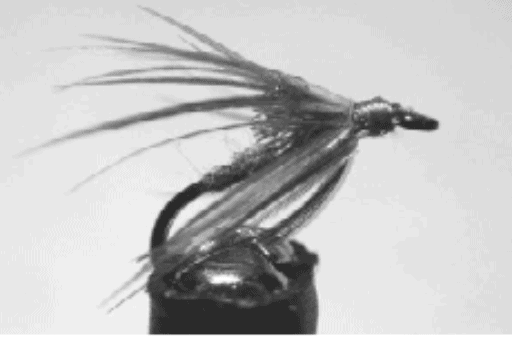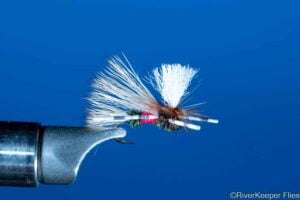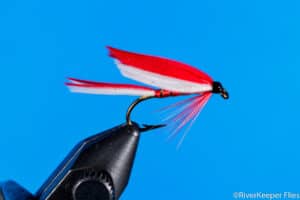This week’s Throw Back Thursday Fly is the Royal Charlie.

The Royal Charlie is another old fly pattern listed in The North Country Fly – Yorkshire’s Soft Hackle Tradition (2015) by Robert L. Smith. Many of these older soft hackle fly patterns come from the Yorkshire Dales in northern England. Wharfedale is a small area of the Yorkshire Dales.
The fly shown is attributed to Nathaniel Hunt (1870 – 1938), the river-keeper of the Manchester Anglers. Smith writes that Hunt “is still talked about to this day as the perfect river-keeper.”
Earlier versions of the Royal Charlie were referenced by John Kirkbride (1837) and Michael Theakston (1853). Each are variants of the same fly.
Kirkbride describes the Royal Charlie on page 23 of his book entitled The Northern Angler (1837) as follows:
“The Royal Charlie, as it is here called, is a fly (although not a natural one) which our anglers are very partial to. It is used about the time the March brown appears, and during the whole of the spring months (either for river or lake-fishing) is a very good killer. As a river-fly, it answers best when the water is rather brownish. The body is made of scarlet floss-silk, with a little tag of the same for the tail; a black hackle must be run up all the way to the shoulders; the wings are of the mottled feather from the partridge tail; the fly must be tipt with gold at the head and tail. For a river-fly, hook No. 7 or 8; for a lake-fly, hook No. 5 or 6.”
(For a free download of The Northern Angler, click HERE.)
Hunt’s variation follows:
| Materials | |
| Silk | Crimson |
| Body | Crimson silk ribbed with gold wire |
| Legs | Dark partridge |
| Head | Peacock herl |
The fly is tied on an Alec Jackson North Country Fly #11 hook.
Enjoy…go fish!







I am a new tier and as such I’m not that proficient in tying but I am trying.the few of these flys I have made I can see the beauty in them when I sit down to my tying station I start ,at a new to me ,fly and I come back to the royal charlie it has that affect on me . Can any one tell me if I have a problem .Bill”